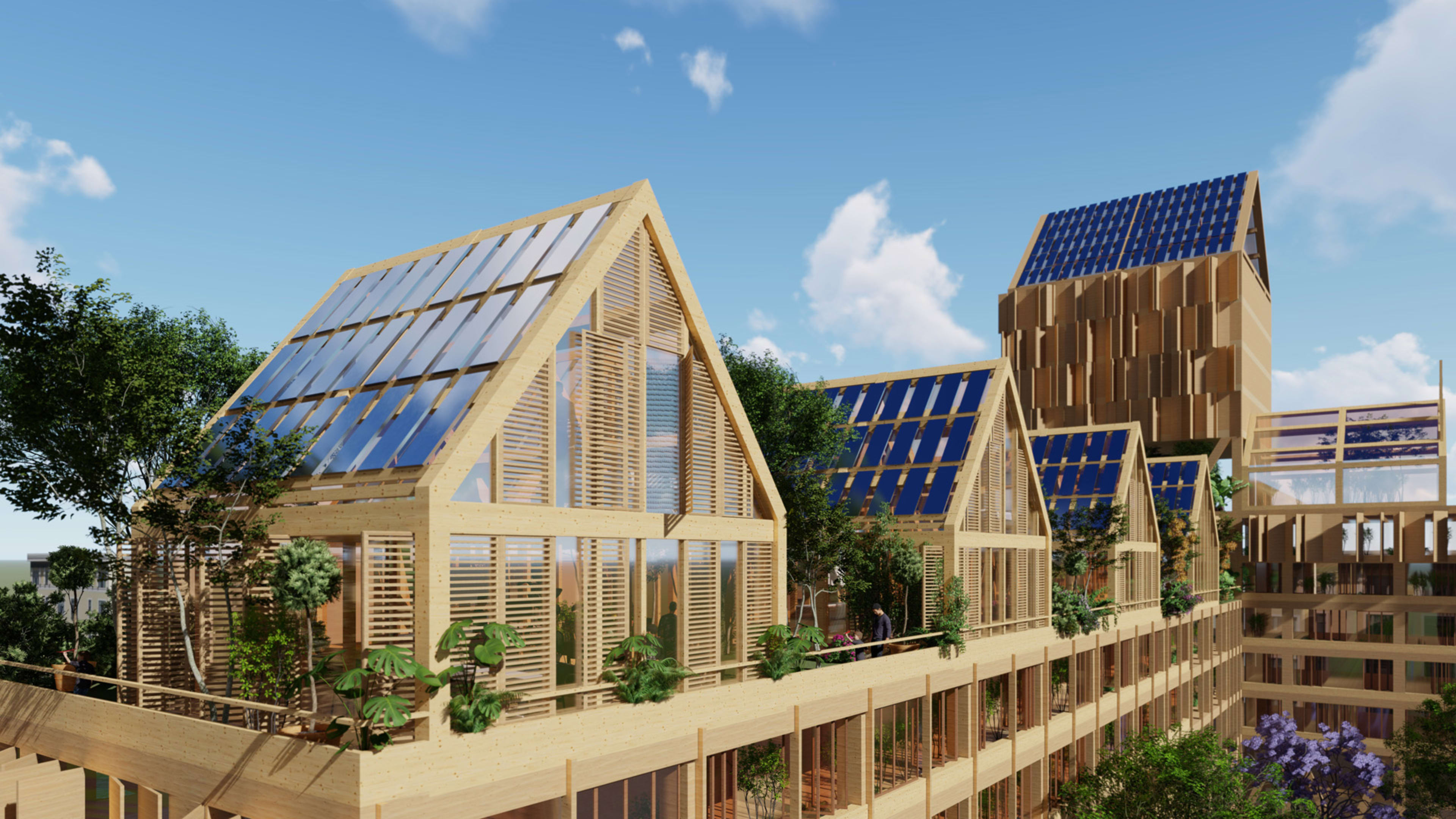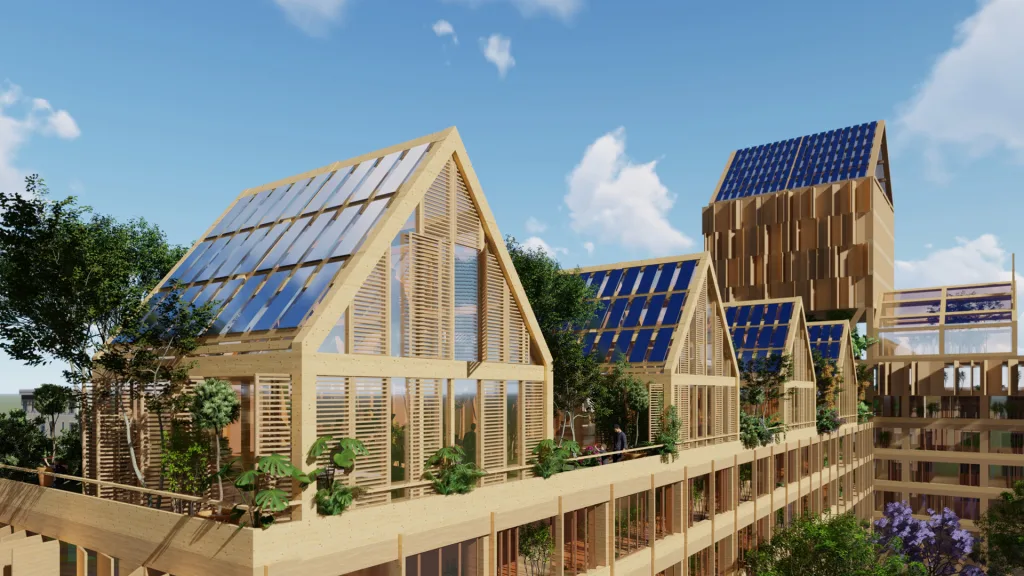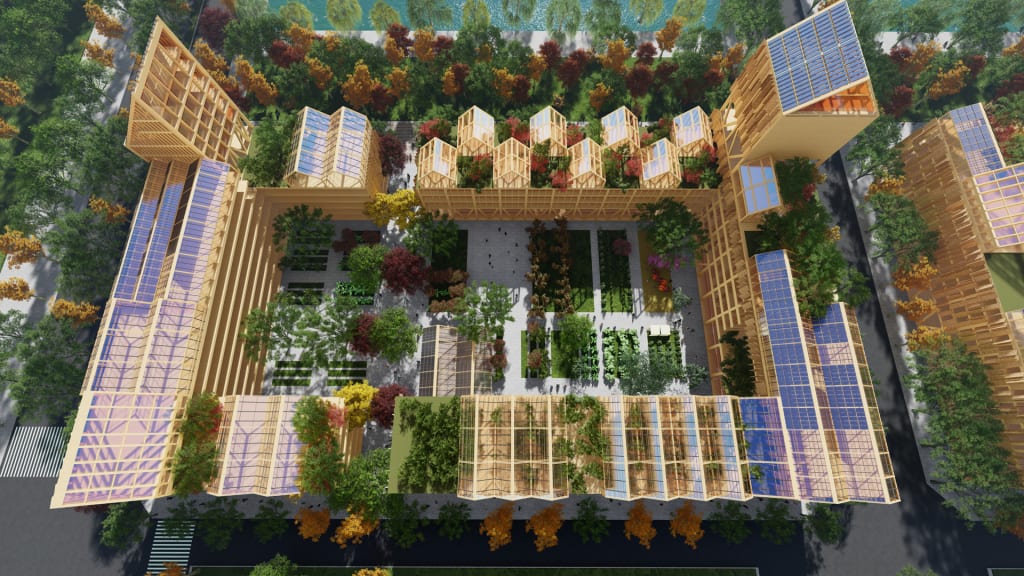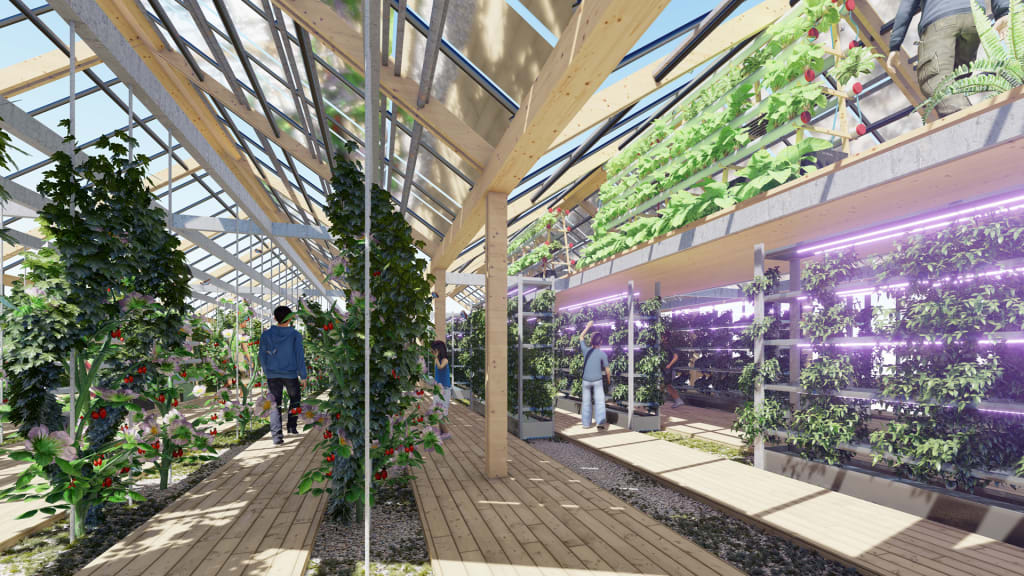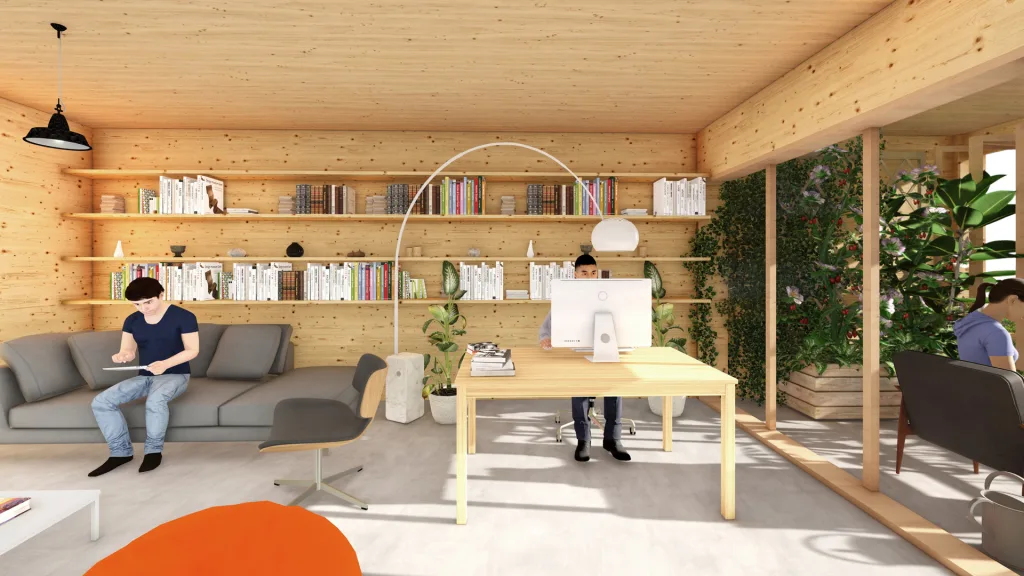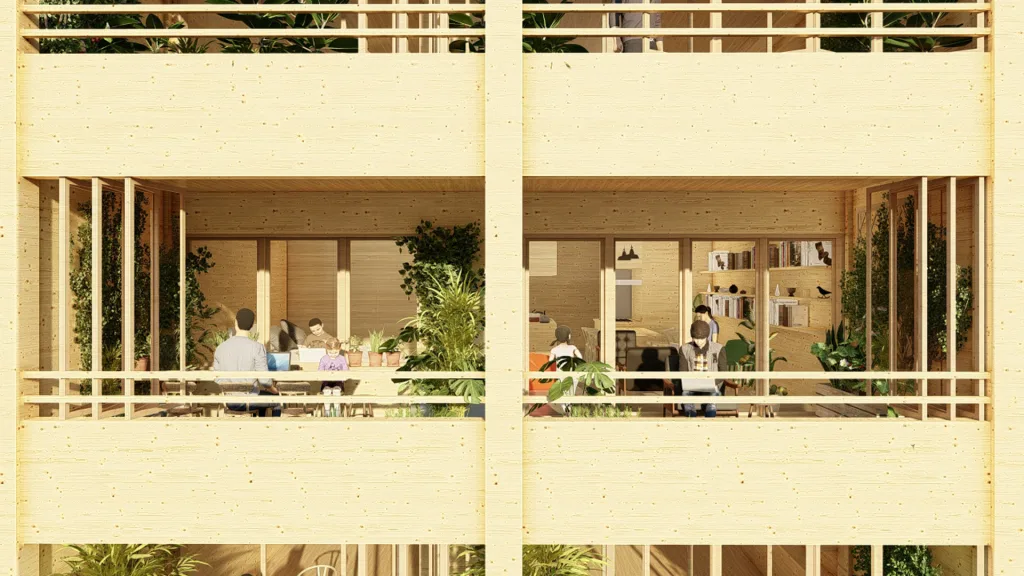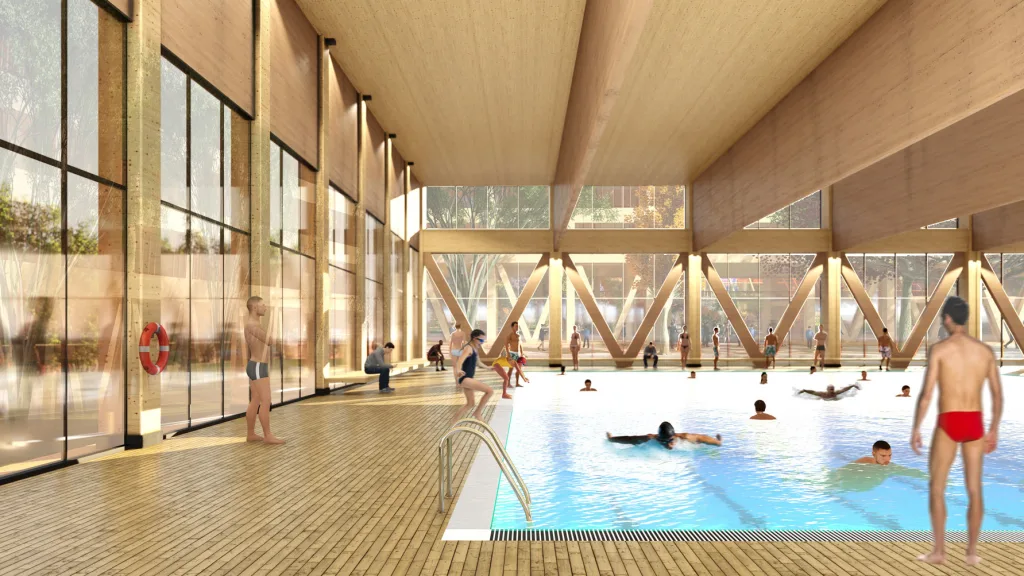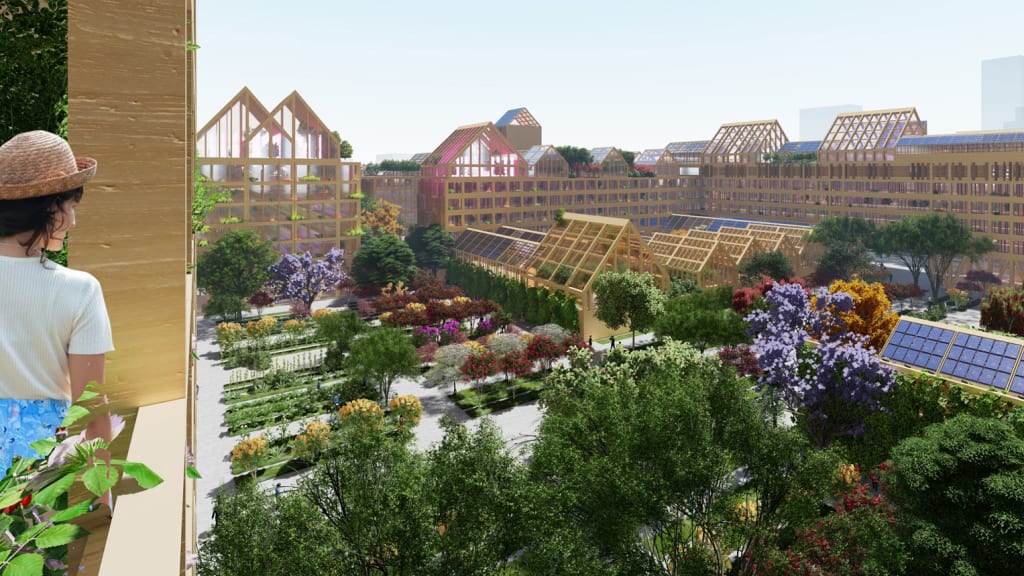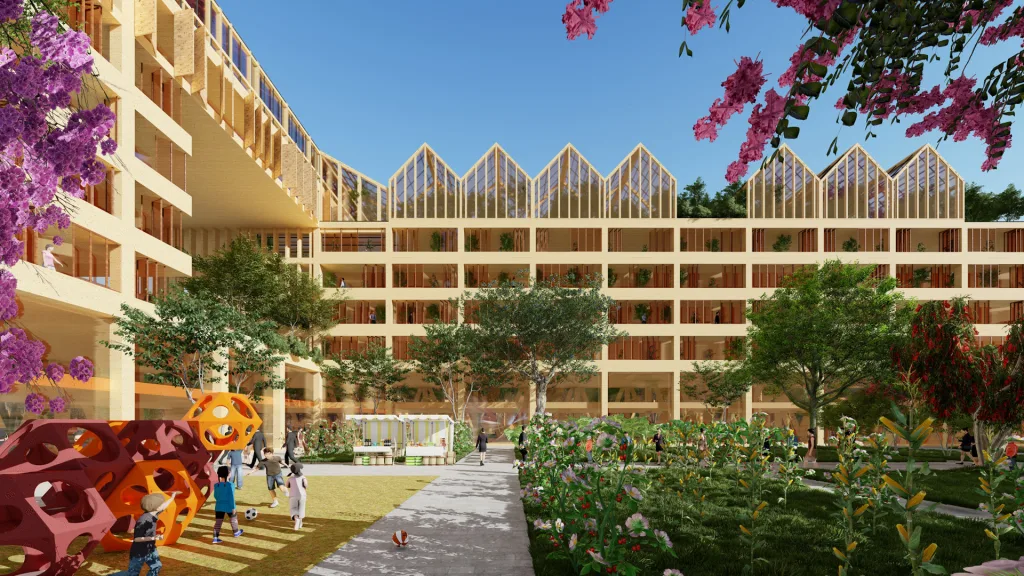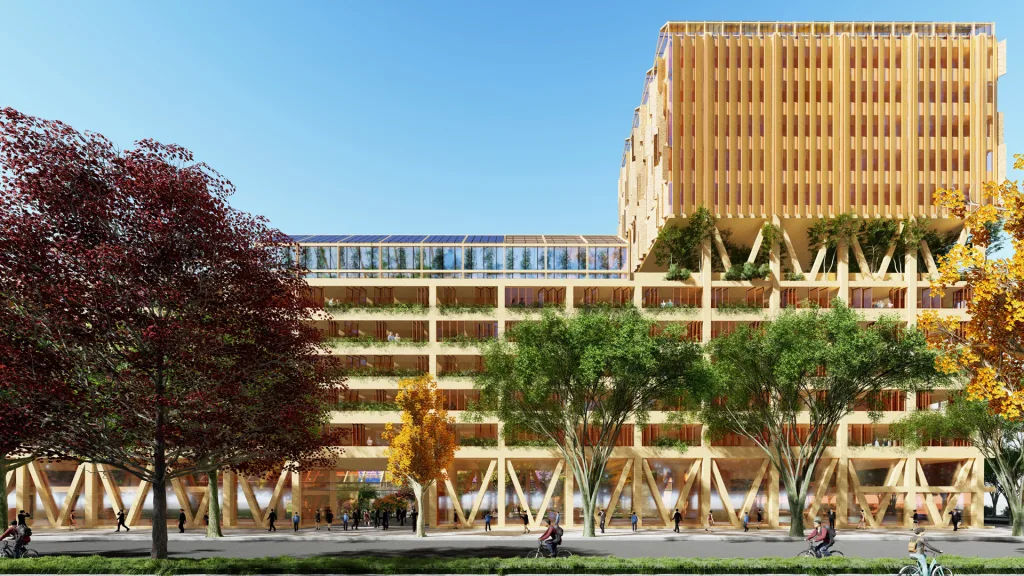Eighty miles southwest of Beijing, the Chinese government is planning a new five-million person city as a model of sustainability—powered by clean energy, featuring huge green spaces, and unsullied by many cars. A new design shows what neighborhoods in the city, called Xiong’an New Area, might look like.
City blocks would surround courtyards with native plants and garden plots. Apartments, designed for people of all income levels and ages, have large balconies with built-in boxes for gardening; greenhouses with vertical farms sit on the roofs, next to rooftop homes with gardens of their own. The wooden buildings, designed to use 80% less energy than typical buildings, use on-site solar power. Most streets are designed to prioritize people on bikes and on foot, not cars.
[Image: courtesy Guallart Architects]Called a “self-sufficient city,” the design also responds to the pandemic. Apartments are designed with space to work from home in future outbreaks; if the lockdown isn’t as strict, people can use coworking spaces in each apartment building. The abundance of onsite food production offers fresh daily produce. Terraces give each apartment private outdoor space, and are designed to have a landing zone for future drone deliveries. Manufacturing spaces in the building give residents access to 3D printers and other tools, so they can make parts for repairs in their unit without leaving home.
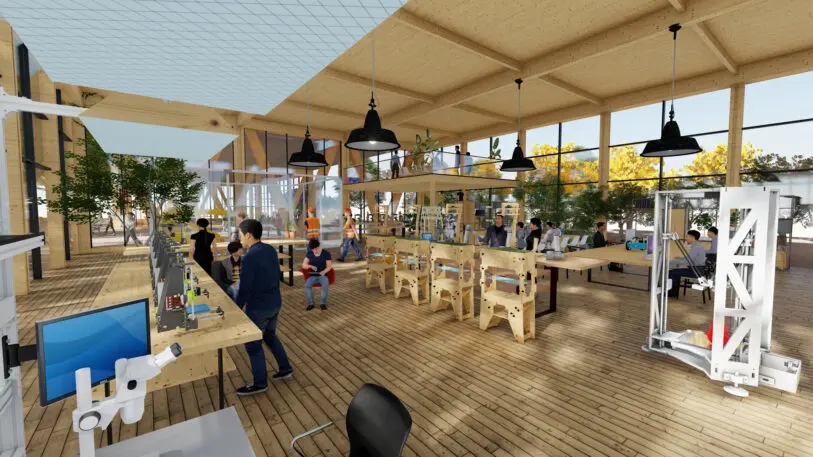
[Image: courtesy Guallart Architects]While the onsite greenhouses and gardens can’t produce all of the food for residents there, the architects estimate that they can grow 40% of the food needed for a vegan diet. “We imagine that food also should continue [growing] around cities, but shouldn’t be sent with containers around the world,” Guallart says. In an app, residents will be able to let neighbors know if they have food available to sell, and markets on the bottom floor of apartment buildings will also sell locally grown produce.
Though China is building a high-speed rail to the area, people will be able to easily reach daily needs by walking or biking, with offices, stores, and schools adjacent to housing. “This model of buildings and communities is more appropriate for the 21st century,” he says. “Cities shouldn’t have a center and periphery (or downtown and suburbs) but should be organized with self-sufficient neighborhoods where you live, work, and rest.” It’s the same model that Paris is pursuing of a 15-minute city.
“We believe that it is necessary to strengthen local communities and people and reinvent what globalization means to go from a model of centralized cities typical of the industrial age to a model of distributed cities, typical of the internet age,” says Guallart. “Given that the ecological component is key in the proposal, we believe that we are moving toward cities that promote life, which we could call bio-cities: Urban planning has to learn more from nature and develop in harmony with it.”
Recognize your brand’s excellence by applying to this year’s Brands That Matter Awards before the early-rate deadline, May 3.
